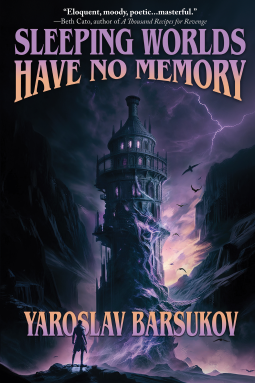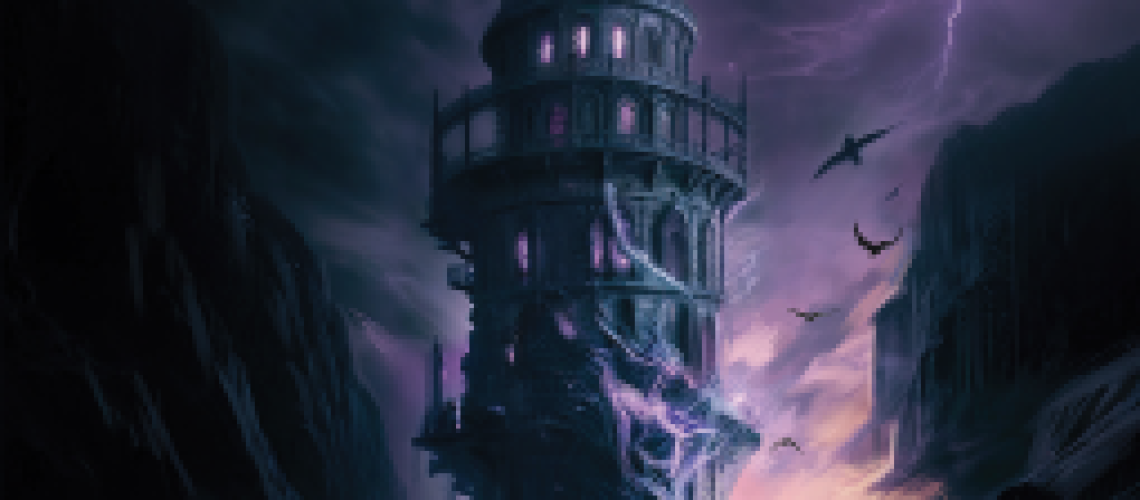When Shea Ashcroft, formerly the commander of the palace guard, is sent off to a border town to investigate delays in the construction of a defensive tower, he views it as a demotion. But when he finds out that it’s being built with half-understood devices from the Drakiri, a remnant minority population of refugees, he first tries to stop it, then tries to control it, while dealing with a duke and an engineer who resent his interference. Then Shea realizes that the danger isn’t just from accidents that kill people, but surreal, world-altering consequences that may shift entire realities.
I had missed Tower of Mud and Straw, a novella by Yaroslave Barsukov, when it was a Nebula Award finalist in 2020, and didn’t find out about it until I was starting to write this review. So I experienced Sleeping Worlds Have No Memory, which continues and expands that story into an entire book, as a whole.

This is an amazing adventure in science fantasy, and I loved how perceptions of what was happening shifted as the book progressed. What initially seems like fairly standard science fantasy, combining feudal lives in cities where people walk around open markets with tech like airships and massive building projects, turns into something akin to a trip to a dangerous, mysterious part of the Dreamlands. Back in this world, things keep getting weirder and more wondrous, as machinations on both sides of the border heighten court politics and plots. Shocking secrets and memories are revealed, and Barsukov sticks the landing in a way that surprised but greatly satisfied me.
The worldbuilding here is top-notch. Settings and cultures are grounded with vivid details, until everything comes unmoored. Also, having now skimmed Tower of Mud and Straw, I love how the second half of Sleeping Worlds Have No Memory picks up what seemed like major revelations from before and shows how they were just the tips of icebergs.
Shea is a protagonist who sometimes has trouble making up his mind but sometimes stays the course despite dire threats; he has a clear sense of right and wrong (disgracing himself with his queen by refusing to order troops to fire on rioters), but he also pretends (to himself and others) that things will work out when conflicts are clearly looming. I often lose patience with a protagonist like this, but not this time. I like Shea, despite my frustration with his flaws and mistakes.
He’s not the only character whose thoughts and memories are revealed. Brielle, the aforementioned engineer, spends much more time in the alternate world than Shea does, through an accident of fate or destiny. We also read from the diary of Lena, a Drakiri woman on a mission. Their aims are very different, but they are both vivid and sympathetic characters.
Memories definitely play a major part in this book, as they provide major motivations for the primary characters. Often the memories are incomplete, or a screen for other things that actually happened, and sometimes they turn out to be about other things entirely when reinterpreted through the prisms of new facts. It turns out that memories are also very malleable under certain circumstances.
I love how all the elements of this book weave together. Sleeping Worlds Have No Memory is a book that fascinated me and kept me engaged. I finished it in just two sessions, but I’ll be revisiting it to appreciate how puzzle pieces were laid out early before being reconfigured by later revelations. This is really good stuff.
Sleeping Worlds Have No Memory, by Yaroslav Barsukov, will be published on Nov. 12, 2024.
Content warnings: Deaths, carnage, threats of torture, and other harms, but nothing graphic.
Disclaimers: I received a free eARC of this book for review via NetGalley.







